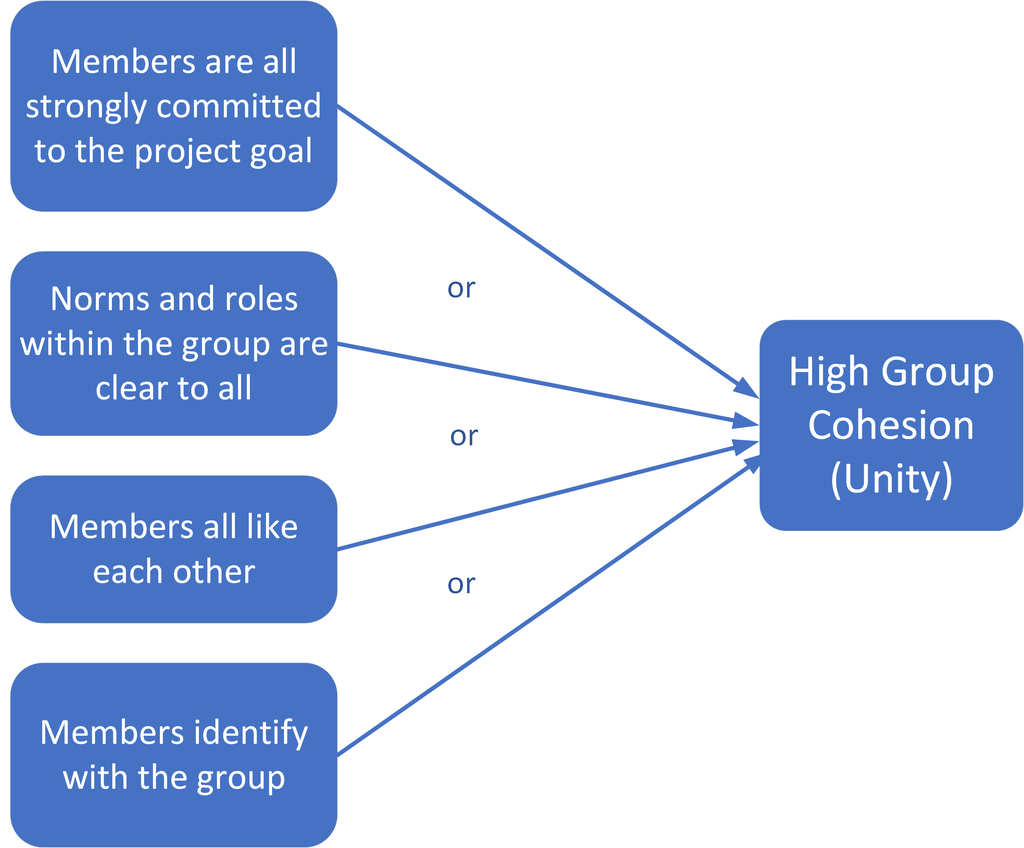
Many studies have examined the factors affecting group or teamworking effectiveness. One factor that has frequently emerged is ‘group cohesion’. But what does ‘cohesion’ mean and what helps enhance it? A recent article by Donelson Forsyth[1] considers these questions by analysing relevant research over the last 25 years. He draws out some interesting findings which I summarise here.
The positive impact of cohesion
Business sector: Research indicates that cohesion is particularly important when project members are highly dependent on each other for project success and when they therefore need to co-ordinate well.
Mental health sector: Many studies have identified the benefits of cohesion for psychotherapy groups. When there is high cohesion, members attend more regularly, engage more actively with the group, experience more support, and display more trust. Not surprisingly then, cohesive groups are more successful in retaining their members.
Cohesion as Unity
What then is meant by cohesion? Forsyth defines it in terms of unity:
“Cohesion is just a group’s degree of unity. A cohesive group is a strong alliance and is considered to be strongly bonded, tight-knit, and unified. A group that is low in cohesion is one that is weakly bonded, lacking in unity, low in member commitment, and divided.”
Sources of cohesion (unity)
Interestingly, Forsyth maintains that the sources of cohesion (unity) can be various and are likely to vary across different groups. This figure gives a few examples.

Cohesion (unity) and culture
The finding that unity can emerge from many different features is important for culturally diverse teams. The implications are as follows:
- The likelihood of group / team members attaching importance to different features of member collaboration may be higher in diverse teams. This suggests that building unity may be more challenging than in less culturally diverse teams.
- From a positive perspective, there is considerable scope for members to build unity around characteristics that are particularly appealing and appropriate for them as a specific set of individuals.
Either way, the findings suggests that time needs to be devoted to exploring and addressing unity in the team or group if their collaboration is to be maximally effective.
How unified is your team or group?
If you would like to find out how unified your team or group is on which features – and hence how effective the collaboration is likely to be – see our Global Teamworking Profiler (GTP). This tool explores the importance that members attach to various features of working together, as well as the extent to which they are experiencing those features. It thus provides a clear picture of the degree of alignment of member viewpoints and experiences across a range of characteristics.
Professor Helen Spencer-Oatey, Director
References
[1] Forsyth, D.R. (2021) Recent advances in the study of group cohesion. American Psychological Association, 25 (3), 213–228. Available at: https://doi.apa.org/fulltext/2021-64793-001.html

